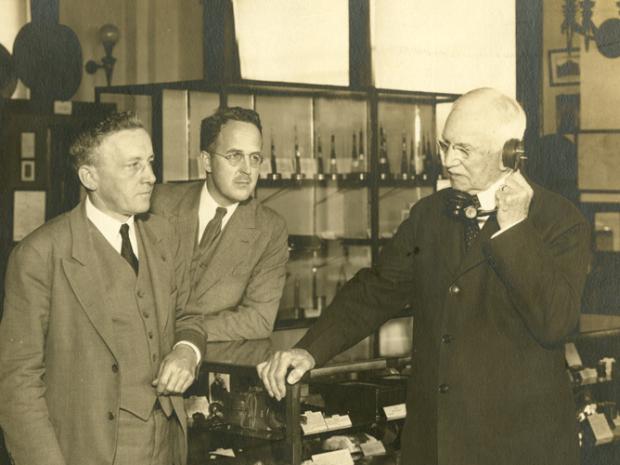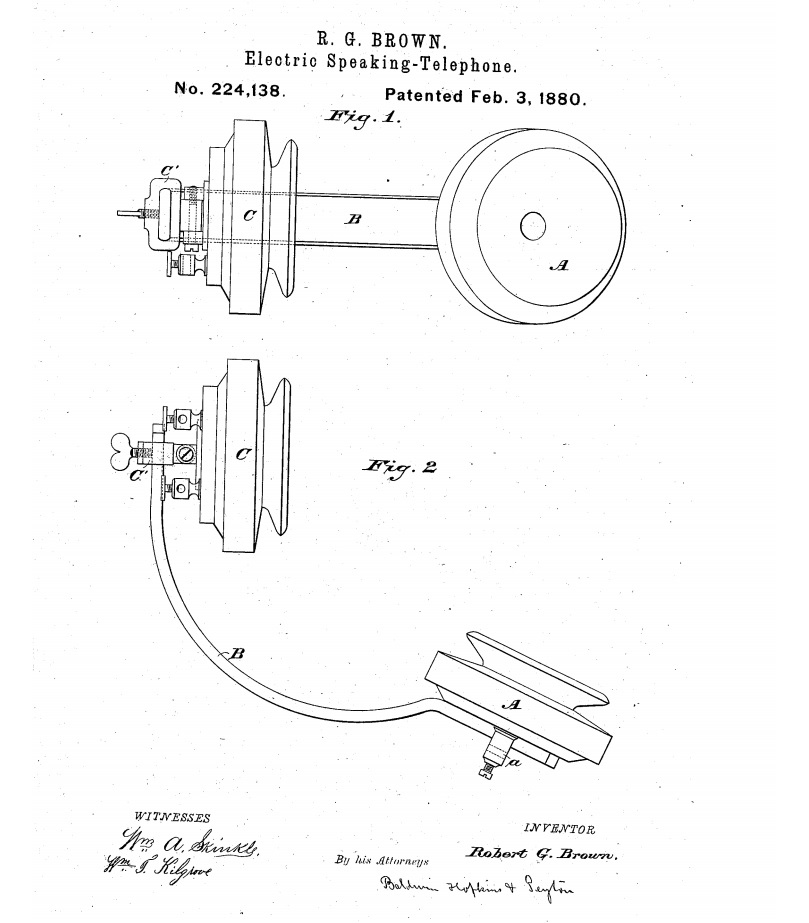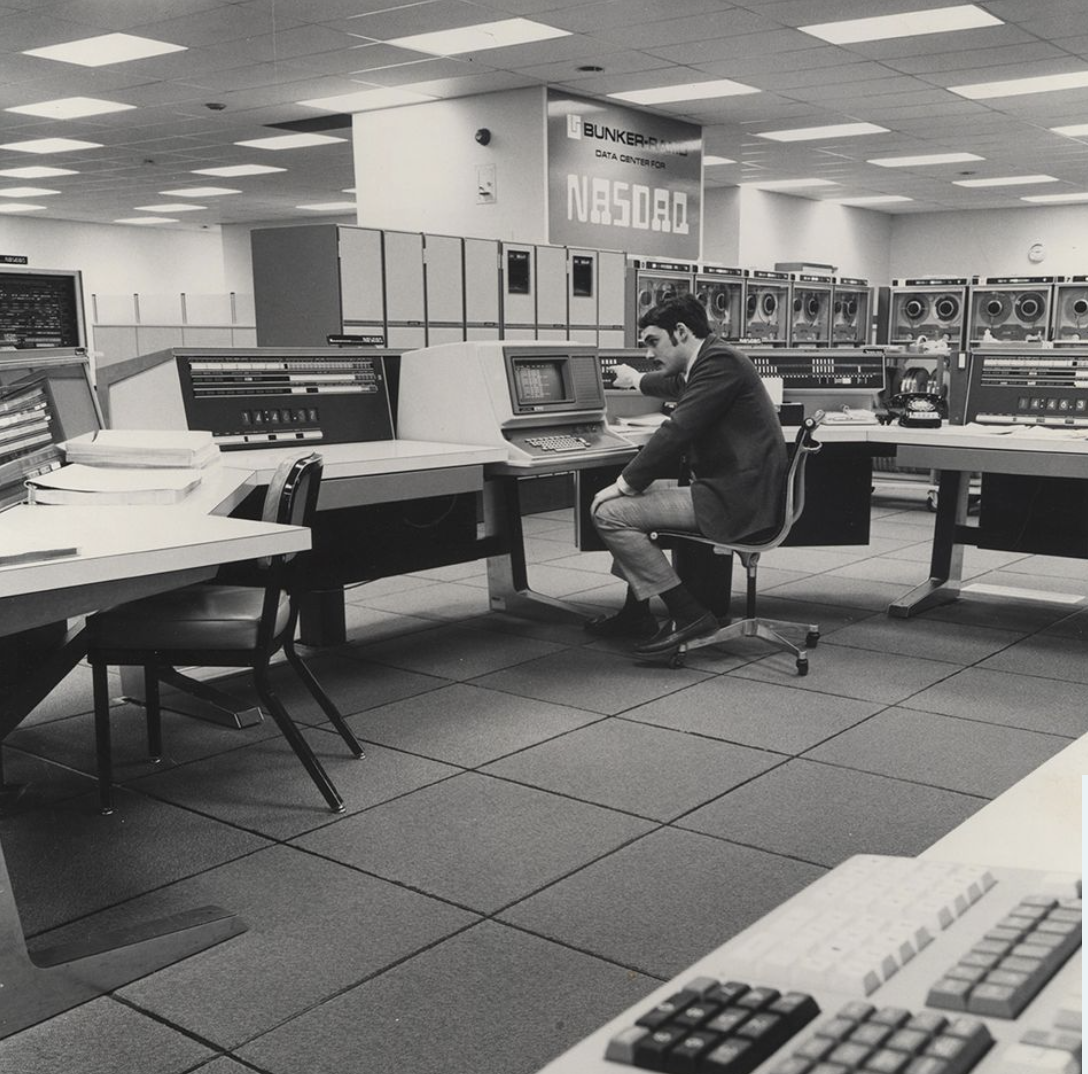Revolutionizing connectivity, from the french telephone to 5G and beyond

Smoke signals, drum beats, semaphore flags, cuneiform ... human beings have always found ways to connect and share information across distances. And since our school was founded 170 years ago, our faculty and alumni have been essential to the communications systems of the future.
Historical achievements that might ring a bell
Chances are that you’ve either seen this hand gesture or made it yourself: three middle fingers curled, the thumb extended toward the ear, and the pinky extended towards the mouth — the universal symbol for “call me.” Younger people might not recognize that the position mimics holding up a non-mobile phone, but even older people could be unaware that phones did not always feature such a handy, integrated construction.

That once-common model — known as the “French telephone” — was the brainchild of alum Robert G. Brown (1868), who first introduced it in 1879. Brown was not only an early pioneer of voice communication, he helped pave the way for women in the workforce, hiring women as early telephone operators.
Other early Tandon-born communications advances:
- In 1915 the first transcontinental telephone call was placed; AT&T engineer Bancroft Gherardi Jr. (1891) was instrumental in developing the technology that made it possible.
- In 1929 the first public ship-to-shore telephone service was inaugurated on the SS Leviathan; Frederick B. Llewellyn (a research director at our school) was one of the co-developers.
- In 1953 Benjamin Adler (’26) built the country’s first commercial UHF station. His company later also built mobile communication equipment for the Atomic Energy Commission, the Central Intelligence Agency and the Voice of America.
- In 1964, the world’s first “picturephone," a device that allowed callers to see each other as they spoke, debuted at the World’s Fair: Bell Labs engineer and alum A. Michael Noll (‘63, ‘71) was involved in that innovation and also holds a patent for the "Feelie," a visionary precursor to our current haptic technology. (Read his reminiscences about the connection between NYU and Bell Labs).
- In 1971 Joel Engel (’64) helped develop the architecture for a cellular network, paving the way for commercialized mobile phone service.
One of the 20th century’s most prolific inventors
In a tribute to alum Jerome Lemelson (‘47, ‘49), the Smithsonian Institution declared: “There is little in our contemporary world that has not been touched by [his] creative genius.” Lemelson — who won his first patent in 1953 and over the following 40 years averaged more than one a month, ultimately amassing more than 600 — is credited with developing the drive mechanism that made portable cassette players and camcorders possible, as well as components of the first cordless phones and fax machines.
CATT-upulting Telecommunications into the Future
In 1983, when the Empire State Development's Division of Science, Technology and Innovation (NYSTAR) decided to launch a series of Centers for Advanced Technology with the aim of forging partnerships between academia and industry, they tapped our school as the site of one of the first, the Center for Advanced Technology in Telecommunications (CATT). In the 40 years since then, CATT researchers have played an integral role in establishing Brooklyn as a leading hub of telecommunications innovation — all while addressing the human, business, and societal issues that arise in the field.

Under the longtime leadership of Professor Shivendra Panwar, faculty members at CATT patented the first integrated circuit chip able to demonstrate the feasibility of Asynchronous Transfer Mode/Synchronous Optical Networks, allowing large volumes of audio, image and video data to transmit at high speeds; introduced the first practical application of a wireless infostation that could communicate information to and from a personal digital assistant or laptop; devised new methods for analyzing network reliability; and helped validate and verify the first nationwide, real-time, financial trading system for NASDAQ, changing the face of the stock exchange forever.
The Evolution of Wireless
If you were around in 1980, you may remember 1G (first-generation) mobile communication, and while you may have been the proud early adopter of the technology, looking back, reception and network performance left a lot to be desired. Luckily, succeeding generations have improved upon that performance, with the 2G mobile network running on digital signals rather than analogue; 3G transmitting larger amounts of data, quicker; and 4G offering unprecedented connectivity for smartphones and laptops, with reduced latency and lightning speed.
By 2012, however, with the use of smartphones and other mobile devices exploding and the amount of data being transmitted increasing at a rapid pace, wireless carriers were facing a global shortage of bandwidth. A solution was in sight though: that year, Ted Rappaport arrived at NYU Tandon to become founding director of NYU WIRELESS, an academic research center dedicated to pushing the boundaries of communications technology, sensing, networking, and mobile devices.
Home to Wireless Superstars
In 2013, Rappaport, who holds the title of David Lee/Ernst Weber Professor of Electrical and Computer Engineering, published what proved to be a world-changing paper. “Millimeter Wave Mobile Communications for 5G Cellular: It Will Work!” was a clarion call demonstrating the value — and necessity — of exploiting an underutilized region of the electromagnetic spectrum for future wireless.
Now acknowledged as a wireless pioneer and an architect of the 5G era, Rappaport arguably deserves credit whenever a patient has a telehealth visit; the resident of a smart, connected city seamlessly accesses a municipal service; or a film buff downloads a director’s entire oeuvre in seconds.
Rappaport — a Fellow of the National Academy of Inventors and National Academy of Engineering, as well as the first-ever career academic elected to the Wireless Hall of Fame — was succeeded as director of NYU WIRELESS by another pioneering figure: Thomas Marzetta, a distinguished industry professor of electrical and computer engineering who is widely referred to as an originator of Massive MIMO (Multiple-Input Multiple-Output), a key enabler for 5G.
(Massive MIMO utilizes numerous small, individually controlled, low-power antennas to direct streams of information, selectively and simultaneously, to many users. This confers spectral efficiency orders of magnitude greater than that experienced in 4G service, along with high-quality service throughout the cell, simplicity and scalability, and outstanding energy efficiency.)

Just as Rappaport was the first to explore the then-radical idea of leveraging the millimeter-wave spectrum, Marzetta’s idea was also thought to be well outside the box. In the intervening years, his own groundbreaking and seminal paper, "Noncooperative cellular wireless with unlimited numbers of base station antennas," published in 2010, has been cited thousands of times, and both he and Rappaport appear regularly on lists of the most-cited researchers in the world.
Also on the trailblazing faculty at the center are Associate Director Sundeep Rangan, who won renown as a co-developer of a FLASH (Fast Low Latency Access with Seamless Handoff) OFDM (orthogonal frequency-division multiplexing, a multi-carrier modulation system) — one of the first cellular OFDM data systems and an important precursor to 4G systems — and Institute Professor Elza Erkip, whose work on cooperative communications and relay networks greatly increased wireless reliability and speed; set the foundation for the 5G; and led to her being one of only a handful of women ever to win the prestigious IEEE Communications Society Edwin Howard Armstrong Achievement Award.
What’s next: The pursuit of 6G
Having marked its 10th anniversary in 2022, NYU WIRELESS researchers are now exploring new parts of the radio spectrum, including terahertz, with its promise of vast amounts of new bandwidth; developing new technologies; forging new partnerships; and turning their attention to the next generation of mobile communications — 6G.
Listen to "Future of Wireless" on Sciencei
Both Marzetta and Rappaport predict a time when autonomous vehicles communicate seamlessly with one another, remote medical devices allow a surgeon to operate on a patient on the other side of the world, and wireless signals can be sent at the rate of human computation. 6G, they say, could connect the world in ways yet unimaginable.
But as previous generations of wireless communications have focused on lower latency and ever-faster data speeds, the pursuit of 6G will also factor cybersecurity and climate considerations into the fabric of next generation wireless.
Watch Ted Rappaport give the keynote speech at 2023 EuCNC & 6G Summit

